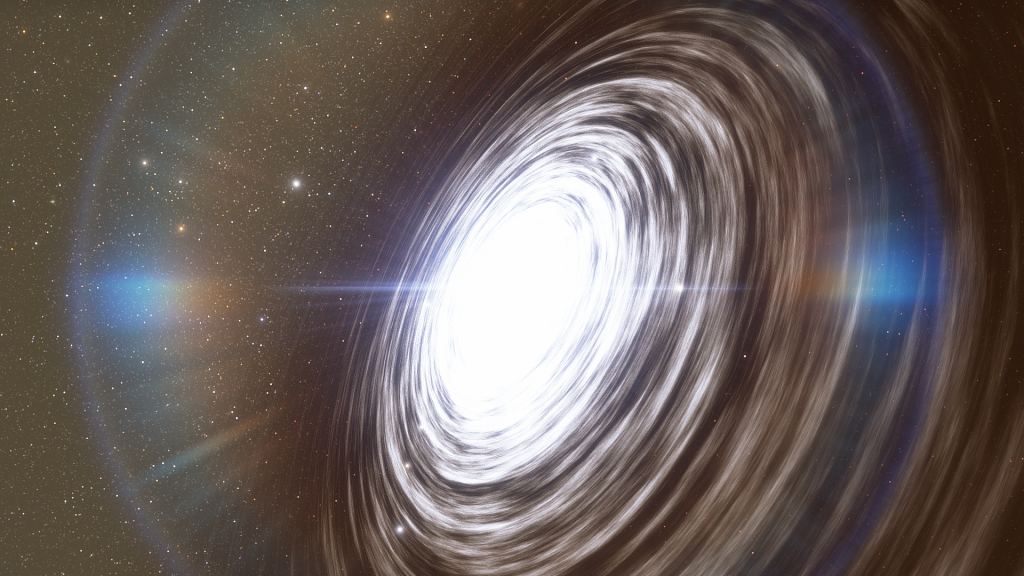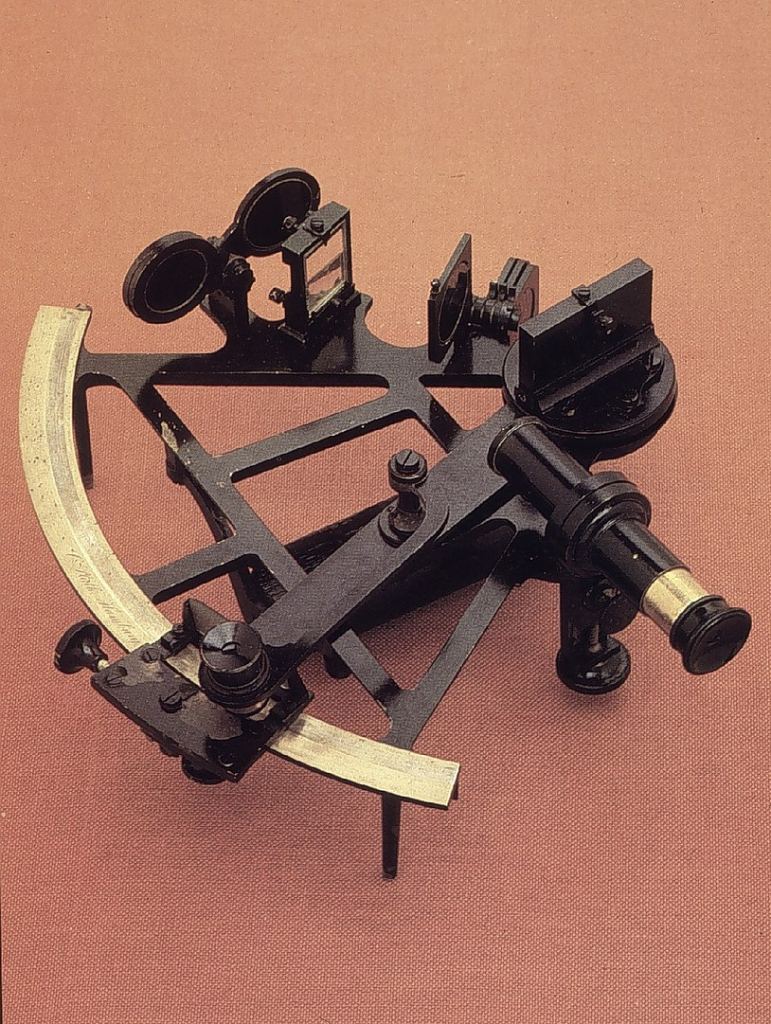“Ain’t like Dusting Crops!” How We’ll Actually Navigate Interstellar Space
By Matthew Cimone
May the 4th be With You!
Blasting out of Mos Eisley Space Port, the Millennium Falcon carries our adventurers off Tatooine bringing Luke Skywalker across the threshold into space. With Imperial Star Destroyers closing, Luke bemoans Han Solo’s delay in jumping to Hyperspace. It takes time to make these calculations through the Falcon’s “Navicomputer.” Han explains that otherwise they could “fly right through a star” or “bounce too close to a supernova.” (probably the same effect of each – also are supernovas bouncy?)
Celestial calculations are needed to figure out where you’re going. In Star Wars these are done by ship computers, or later by trusty astromech droids like R2-D2. But, for the first time, simulations have been conducted of an uncrewed ship’s ability to autonavigate through interstellar space. While not at Hyperspace speeds, the simulations do account for velocities at up to half the speed of light. Created by Coryn A.L. Bailer-Jones of the Max Plank Institute for Astronomy, these simulations may be our first step to creating our own “Navicomputers” (or R2-D2s if they have a personality).

c. NASA
Cutting the Cord
The most distant object we’ve sent out into the Universe is the Voyager 1 Space probe. Probe’s like Voyager update their position through radar and radio signals with Earth. You can actually track Voyager’s real-time location online. The location of the craft is triangulated using two ground-based stations on Earth and then the position of a known bright object next to the apparent position (in the direction of but not near) of the spacecraft like a quasar. This tracking system is like a giant light-based umbilical cord connecting the craft to Earth. But these craft don’t have their own Navicomputers or R2 units. All guidance is dependent on the connection to Earth. Once that space craft is out of signal range, or if the signal is interrupted, the craft doesn’t have an internal way of being able to navigate. Probes like Voyager will eventually loose connection with Earth and be left to drift for hundreds of millions of years. We may never know where they end up or who finds them – if anyone.

In a Sea of Stars
If we’re planning on sending craft into deep space, they need a way to navigate and make course corrections without instructions from Earth. One proposed method is by referencing known pulsars. Pulsars are the remnants of dead stars created from cataclysmic supernova explosions. As the stars violently collapse, their angular momentum or spin is transferred to an increasingly smaller and smaller object – think like a figure skater retracting their arms. These pulsars spin with known frequencies at known distances. They could be used like interstellar GPS satellites to determine where you are in 3D space. However, there is some debate as to how accurate this system is as you have to rely on only a handful of pulsars and space dust/gas, called the Interstellar Medium, could introduce error into these pulsar calculations.
So Bailer-Jones suggests a method that is as ancient as navigating the sea. Use a sextant. Celestial navigation has already been done for centuries on the ocean. Vessels would use a sextant to measure the angle or “angular distance” between a star or the Sun and the horizon in order to calculate position on the Earth’s surface.

A spacecraft deep in interstellar space could use a similar technique measuring the angular distance between stars and extrapolate from their change in position over time where the ship it is relative to those stars. Stars move for two reasons while you’re traveling through space. The first is parallax, the perceived motion of an object caused by your change in vantage point. You can see this change in position if you hold one of your hand out at arms length and view your fingers with one eye closed then the other. Your fingers appear to “move”. We see the sky move in similar ways.
As our Earth orbits the Sun, we witness the change in the position of stars. When we’re on one side of our orbit, it’s like we’re looking at the sky with one eye open as with the hand example. Six months later, we’re looking with the other eye on the other side of the Sun. The amount a star shifts gives us a distance calculation to that star in Parsecs (ahem…Han Solo are you paying attention? Parsec is a measurement of distance). A star at a distance of one parsec will appear to change position in the sky one “arcsecond” (one 3600th a degree in the sky) in 6 months of our orbit around the Sun. One parsec translates to about 3.26 light years. Similarly, to a moving space craft, a star 1 parsec away will be displaced by 1 arcsecond for each AU (Astronomical Unit = average distance between the Earth and the Sun = about 150 million Km) the ship travels through space.

Unlike ground based observation of the spacecraft, distant quasars won’t work in this scenario because they are just too astronomically far away. The closest quasar to Earth is half a billion of light years distant and so the parallax effect is practically invisible. Instead, the craft would be observing the closest and brightest stars to make measurements along its journey as those stars will demonstrate the greatest parallax effect.
Stars will also appear to change position because they are themselves moving through the Milky Way. The closer we are to those stars in a moving spacecraft, the more apparent their own motion will be over time. The change of the star’s apparent position in the sky because of its actual motion through space relative to the ship is called “aberration.” The spacecraft can distinguish the changes in a star’s position as either from parallax or aberration. The two types of motion, parallax and aberration, taken together can tell us two things about the spacecraft that we need to know. Parallax gives us a real-time position of the spacecraft in 3d space. Aberration gives us the velocity of the spacecraft relative to the motion of these stars.
In order for the system to work, the spacecraft would carry a star chart of known star positions and velocities that have already been mapped from Earth using data from starcharting missions like Gaia and Hipparcos. Gaia alone is mapping 1% of the galaxy….which doesn’t seem like much until you realize that’s 1 BIILLION stars. If our craft is going to journey even a few light years into space – much farther than we’ve ever been – that map is more than sufficient.

A Simulated Navicomputer
Some assumptions need to me made about the virtual spacecraft we’re sending out into the Universe which Bailer-Jones chooses for the simulation. Gaia can achieve an accuracy on angular distances between stars down to sub-milliarseconds. Reeeeeally fine measurements. But to be safe, this simulation assumes that the spacecraft can at least measure down to one arc second. We don’t know how powerful the navigational instruments on the craft can be. Remember, an interstellar probe probably needs to be compact as well as carry other sensing equipment. More accurate angular measurements means larger telescopes for navigating.
The spacecraft, using existing star charts, has access to the expected directions and velocities of stars relative to the space craft. The craft measures the angular distances between a selection of these stars and one reference star which an onboard sextant is always pointed to. In this case, that star might be our own Sun but any star could be used and that’s an important note since the whole point of this system is that navigation works regardless of where you started from.
Simulations placed the craft between .1 and 10 light years from Earth – an upper estimate of how far our first attempts at interstellar travel will go. Remember the closest star to our own, Proxima Centauri, is only 4.2 light years away. Even that would be amazing. The ship is also simulated at speeds ranging from 0 to 500km/s as well as relativistic (approaching the speed of light) at up to 0.5c (.5 times the speed of light – NOT .5 PAST light speed). If we want to go to another solar system, we will likely need to be traveling at a good fraction the speed of light and the simulation wants to capture how that impacts our navigation if at all.

What’s your 20?
The results of the simulation – yes, you can find out where you are in space! Secondly, Bailer-Jones determined with what degree of accuracy. For example, using 10 stars as a reference point with 1” angular measurement accuracy traveling at .39c, the spacecraft can determine where it is within 5AU position accuracy and within 5km/s velocity accuracy. Not bad. 5AU is a big bubble of space though. However, using 100 stars the craft can locate itself to within 1.2 AU and determine its velocity to within .6km/s. In addition, traveling at relativistic speeds doesn’t change the overall ability of the craft to know where it is. (We’ll leave problem that to the next gen of FTL ships)
If you increase the angular distance measurement accuracy to .1 arcseconds the craft’s location could be measured to within .3AU and velocity to 200m/s using only 20 stars. So any extra ability to increase the measuring accuracy reduces how many total calculations you need to make. Hopefully Han knows this.
Reading Bailer-Jones’ research, I felt a connection to our wee virtual spaceship flying through the stars. This is still a long way from Hyperspace, and we’re not flying fast enough to worry about flying THROUGH other stars, but we might be on the verge of flying TO other stars. I just hope the the ship’s navigational computers are given at least SOME kind of Sci-Fi themed name. R2? L3? Chewy?…Chekov? Any of those would do.
Featured Image: Simulated Hyperspace Jump in SpaceEngine by Author
More to Explore:
Original Research Article “Lost in Space? Astronavigation using an astrometric star catalogue
The Solar System has been Flying Through the Debris of a Supernova for 33,000 Years – Universe Today
Take a Flight Through the Most Detailed 3D Map of the Universe Ever Made – Universe Today
The post “Ain’t like Dusting Crops!” How We’ll Actually Navigate Interstellar Space appeared first on Universe Today.

May 5, 2021 at 03:09AM
via Universe Today read more...


Post a Comment